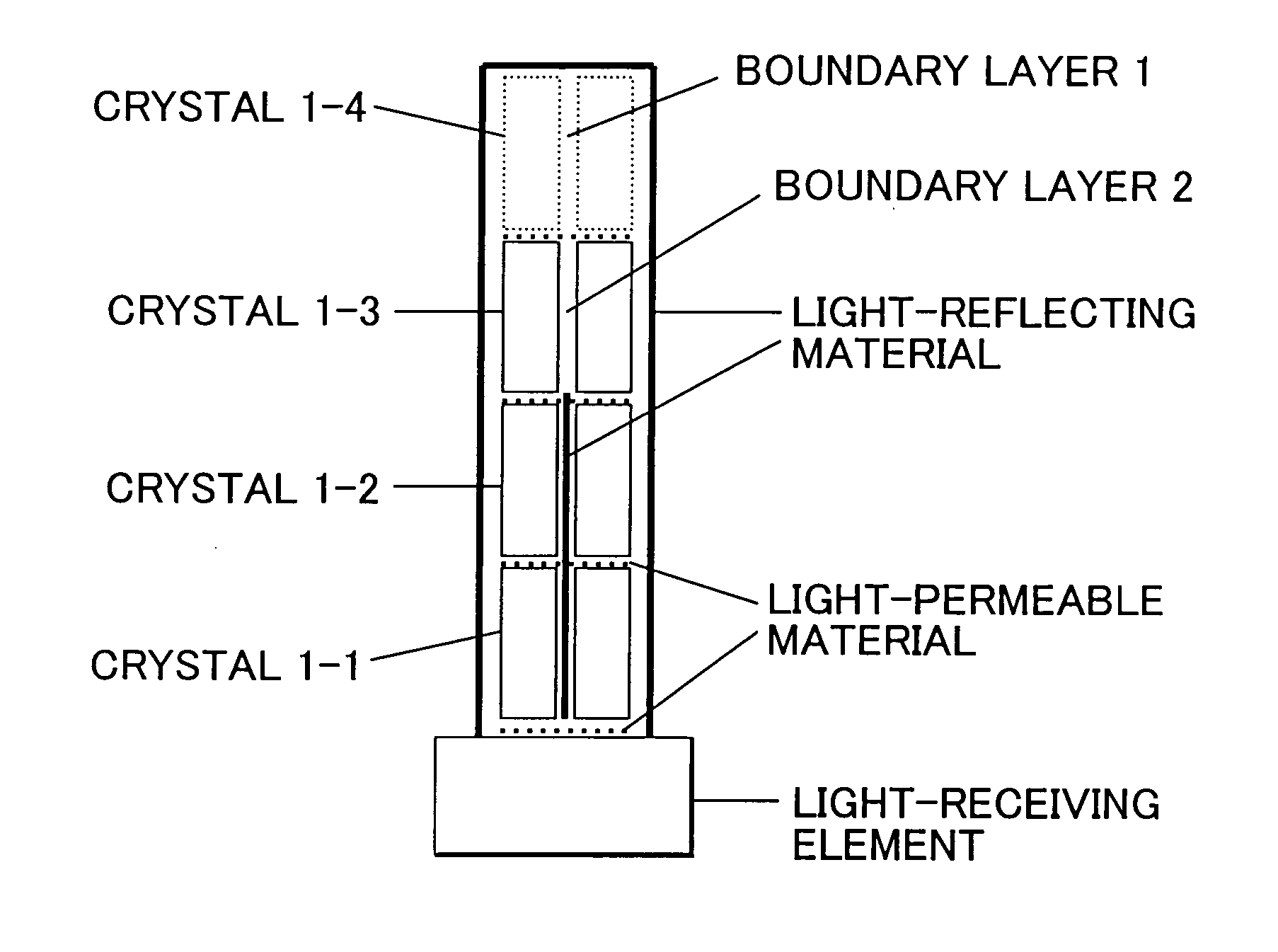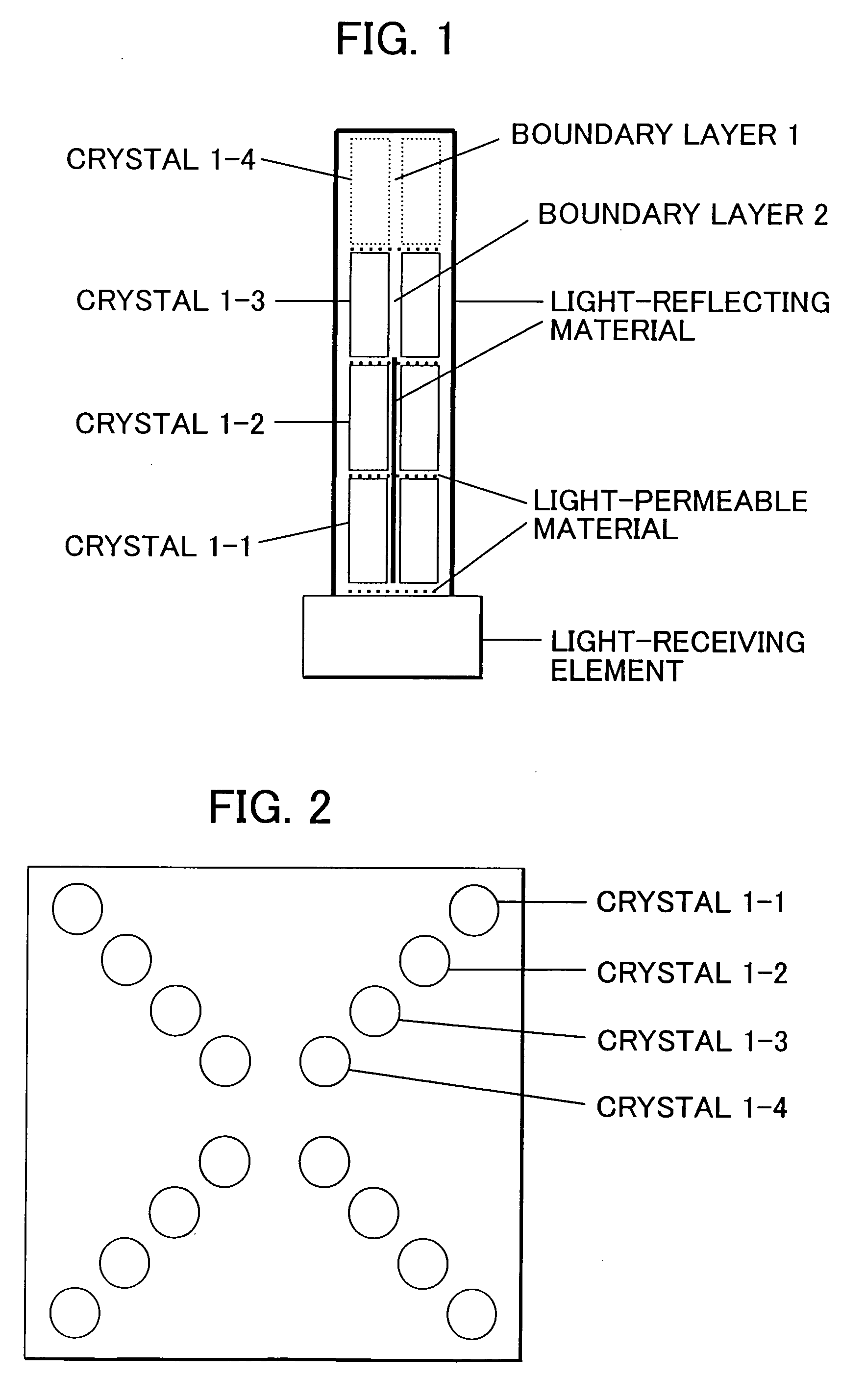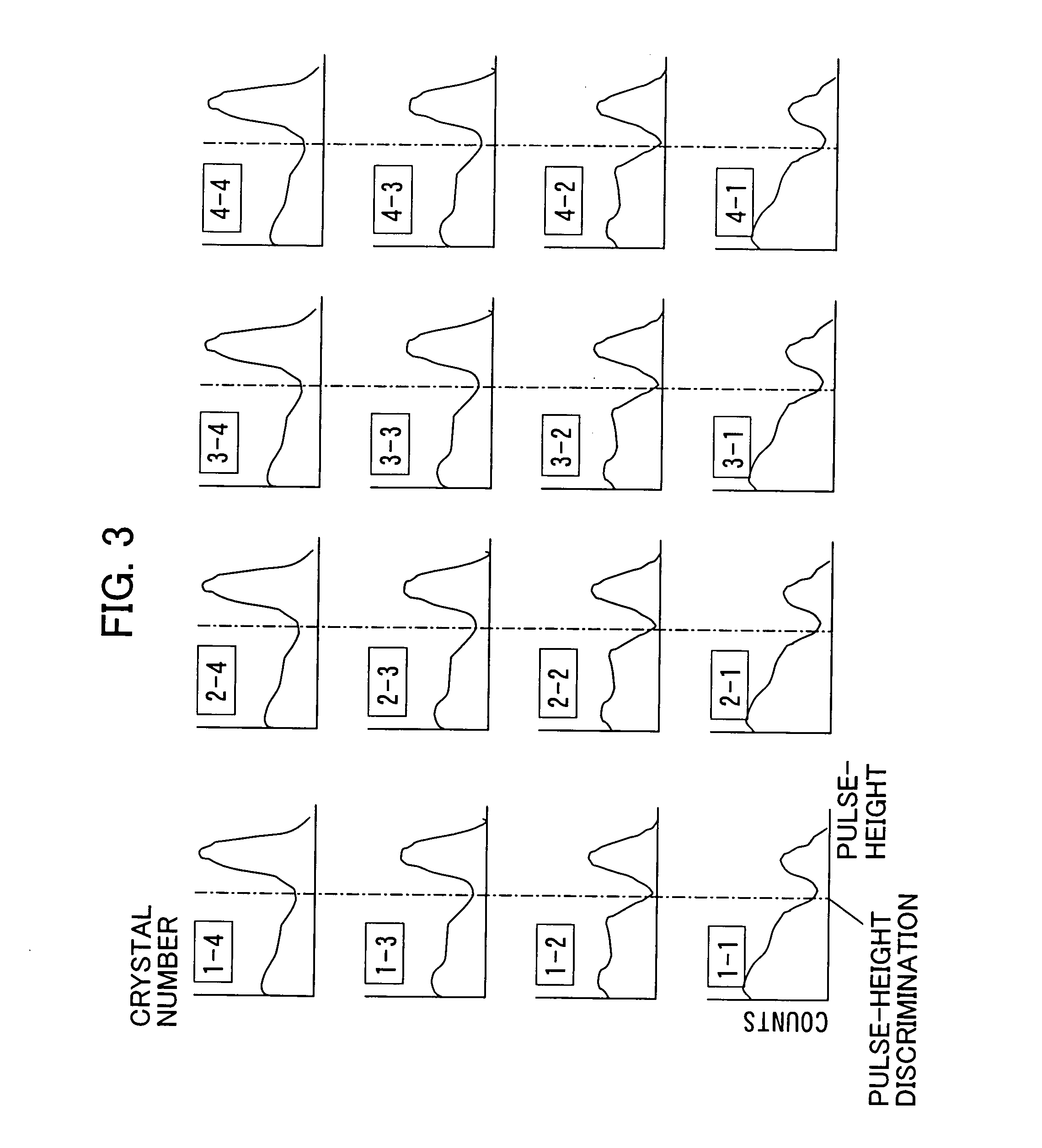Depth of interaction detector with uniform pulse-height
a detector and pulse-height technology, applied in the direction of radiation intensity measurement, instruments, x/gamma/cosmic radiation measurement, etc., can solve the problems of non-uniform image, damage to overall depth of interaction detection characteristics and energy-resolving characteristics of the device, and achieve the effect of improving the uniformity of energy information
- Summary
- Abstract
- Description
- Claims
- Application Information
AI Technical Summary
Benefits of technology
Problems solved by technology
Method used
Image
Examples
example
[0045] The present invention will hereunder be described in more detail with reference to the accompanying drawings.
[0046]FIG. 1 is a diagram for the illustration of an embodiment of the depth of interaction detector with uniform pulse-height according to the present invention. In the depth of interaction detector with uniform pulse-height according to the present invention, scintillator cells are optically put on top of each other to form a four-layer scintillator and to thus form a scintillator unit as shown in FIG. 1. In this connection, a light-receiving element is optically coupled to each multi-layer scintillator at each end face of this scintillator unit and the external portions of the scintillator unit other than the end face are coated with a light-reflecting material (such as polytetrafluoroethylene) to a thickness (as determined after drying) of, for instance, 100 μm. Thus, the light rays generated within each scintillator cell are distributed to and arrive at these fou...
PUM
 Login to View More
Login to View More Abstract
Description
Claims
Application Information
 Login to View More
Login to View More - R&D
- Intellectual Property
- Life Sciences
- Materials
- Tech Scout
- Unparalleled Data Quality
- Higher Quality Content
- 60% Fewer Hallucinations
Browse by: Latest US Patents, China's latest patents, Technical Efficacy Thesaurus, Application Domain, Technology Topic, Popular Technical Reports.
© 2025 PatSnap. All rights reserved.Legal|Privacy policy|Modern Slavery Act Transparency Statement|Sitemap|About US| Contact US: help@patsnap.com



